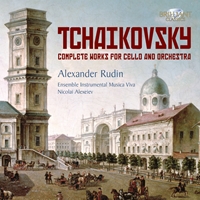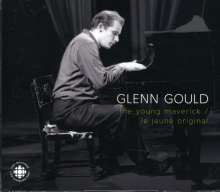Our first chapter in the Classical Collections provided a
survey of the Piano Concertos of Mozart. Todaay, we will focus on the works of
four pianists (keyboardists to be more precise) who happen to be composers. Let
is consider their collections in chronological order.
The Keyboard Concerti of Johann Sebastian Bach
The keyboard (harpsichord) concertos (BWV 1052–1065) follow
the standard solo keyboard, strings and
continuo configuration of the Baroque period. There are seven complete
concertos for a single harpsichord (BWV 1052–1058), three concertos for two
harpsichords (BWV 1060–1062), two concertos for three harpsichords (BWV 1063
and 1064), and one concerto for four harpsichords (BWV 1065). Two other
concertos include solo harpsichord parts: the concerto BWV 1044, which has solo
parts for harpsichord, violin and flute, and Brandenburg Concerto No. 5 in D
major, with the same scoring. In addition, there is a nine-bar concerto
fragment for harpsichord (BWV 1059) which adds an oboe to the strings and
continuo.
Most of Bach's harpsichord concertos (with the exception of
the 5th Brandenburg Concerto) are thought to be arrangements made from earlier
concertos for melodic instruments – mainly the violin, but sometimes the oboe
(in the case of BWV 1060, both of them!)
Today’s collection ignores the fragmentary concerti, and the
concerti for three and four solo instruments.
Concerto No. 2 in E Major, BWV 1053 [Guide #271]
Concerto No. 3 in D Major, BWV 1054 [Guide #271]
Concerto No. 4 in A Major, BWV 1055 [Guide #141]
Concerto No. 5 in F minor, BWV 1056 [Guide #141]
Concerto No. 7 in G minor, BWV 1058 [Guide #271]
Concerto for Two Keyboards in C minor, BWV 1060 [Guide #271]
Concerto for Two Keyboards in C minor, BWV 1062 [Guide #271]
Listener Guide #271 - Christophe Rousset Plays J.S. Bach
I recall having discussed many times Johann Sebastian Bach’s
penchant for reusing his compositions, and setting them for different
instrument combinations. Let’s recall, for instance, the curious case of the
keyboard concerto BWV 1052 and again presented in its violin setting in another
Listener Guide in our series. As is the case for most of these concertos, it is
left unclear which came first… (
ITYWLTMT
Podcast # 285 - 27 July 2018)
The Beethoven Piano Concertos
There are five Beethoven Piano Concertos given opus numbers
in the Kinsky catalog – there is one “youth” piano concerto and a concerto
movement contemporary to concertos 1 and 2 in the WoO list – neither of these
are in this survey. Although it was published as “#1”, the first concerto
performed publically was “#2” in Vienna as part of Beethoven’s official debut
concert.
Perhaps due to the Violin Concerto's lack of success at its
premiere, and at the request of Muzio Clementi, Beethoven revised it in a
version for piano and orchestra, which was later published as Op. 61a. For this
version, which is present as a sketch in the Violin Concerto's autograph
alongside revisions to the solo part, Beethoven wrote a lengthy, somewhat
bombastic first movement cadenza which features the orchestra's timpanist along
with the solo pianist.
Piano Concerto No.1 in C major, Op.15 [
Guide #177]
Piano Concerto No.2 in B flat major, Op.19 [
Guide #178]
Piano Concerto No.3 in C minor, Op.37 [Guide #272]
Piano Concerto No.4 in G Major , Op.58 [
Guide #179]
Piano Concerto No.5 in E flat major Op.73
-"Emperor" [Guide #273]
Piano Concerto in D major, Op. 61a (after the violin
concerto, op. 61) [Guide #178]
Listener Guide #272 – Beethoven and Schoenberg
The two concertos featured (Beethoven’s third and Schoenberg`s)
are both featuring Glenn Gould in the 1950’s accompanied by incarnations of the
CBC Radio orchestra. At one point, the CBC had four orchestras across the
country: Montreal, Toronto, Winnipeg and Vancouver. A few years ago, the only
CBC orchestra left (in fact, the only full-time radio orchestra in
North-America at the time) was the Vancouver-based orchestra. (
ITYWLTMT
Podcast #39 - 20 Jan 2012)
Listener Guide #273 – Beethoven Sonatas and Concerto
Of the five Beethoven concertos, the fifth (Emperor) is
surely his best known, and its powerful rondo stands out as probably a
precursor of the great piano concertos that will follow in the coming century –
notably the great Russian concertos, part virtuoso showpiece and part catchy
tune. The late great Vladimir Horowitz is the soloist, with Fritz Reiner
conducting the RCA Victor Symphony (i.e. the NBC Symphony). (
ITYWLTMT
Podcast # 158 - 30 May 2014)
Frederic Chopin’s works for Piano and Orchestra
Relatively early in his career Chopin realised that he
excelled in performance of more intimate delicacy than was generally possible
in the concert hall. Nevertheless in a world that still made little distinction
between composer and performer, he provided himself with compositions for piano
and orchestra with which to make his name at the start of his career. It was
only once he had established himself in Paris in the 1830s that he turned
rather to the kind of playing that he made so much his own, performances that
demanded great technical proficiency, but made no attempt to impress, as Liszt and
Kalkbrenner did, by displays of sound and fury.
The concertantre works rely heavily on the solo instrument,
and Chopin himself played them on occasions without the assistance of an
orchestra.
Variations on "Là ci darem la mano" from Mozart's
Don Giovanni, in B♭ major, op. 2 [Guide
#274]
Piano Concerto No. 1 in E minor, op. 11 [
Guide #185]
Fantasy on Polish Airs, in A major , op. 13 [Guide #275]
Rondo à la Krakowiak, in F major , op. 14 [Guide #276]
Piano Concerto No. 2 in F minor , op. 21 [Guide #275]
Andante spianato et grande polonaise brillante, in E♭
majo, op. 22 [Guide #277]
Listener Guide #274 – Claudio Arrau (1903–1991)
Claudio Arrau León was a Chilean pianist known for his
interpretations of a vast repertoire spanning the baroque to 20th-century
composers, especially Bach, Beethoven, Schubert, Chopin, Schumann, Liszt and
Brahms. He is widely considered one of the greatest pianists of the twentieth
century. (
ITYWLTMT
Podcast # 302 – 22 Jan 2019)
Listener Guide #275 – Chopin Showcase
The Piano Concerto in F minor dates from 1829. Chopin wrote
the piece before he had finished his formal education, at around 20 years of
age. It was first performed on 17 March 1830, in Warsaw, Poland, with the
composer as soloist. It was the second of his piano concertos to be published
and so was designated as "No. 2", even though it was written first.
The performance I retained is from an old vinyl in my collection featuring a
young Cecile Licad. (
ITYWLTMT
Podcast # 292 - 5 Oct 2018)
Listener Guide #276 – Piano and Orchestra
Rondo à la Krakowiak (subtitled “Grand Rondeau de Concert”)
was written in 1828 and dedicated to Princess Anna Zofia Sapieha, whose mother,
Izabela Czartoryska, was influential in shaping the burgeoning Romantic
aesthetic in Poland. Its title derives from a Renaissance-era Polish dance,
said to be associated with courtship practices. Chopin, always showing an
interest in native dances, as demonstrated by his numerous mazurkas and
polonaises, was well-suited to adapting folk-like music to the concert hall. (
ITYWLTMT
Podcast # 307 – 29 Mar 2019)
Listener Guide #277 – This and That
Sergei Rachmaninov’s works for Piano and Orchestra
Unlike their illustrious predecessor Tchaikovsky, both
Prokofiev and Rachmaninov were great pianists ,
both Conservatory trained on the instrument. Rachmaninov however had to
turn to his pianistic abilities shortly after the Russian Revolution as a way
to provide income for his household, relegating his composing to the back
burner. His formidable technique does transpirte in every page of his four
piano concerti, and his late masterpiece, the Rhapsody on a theme by Paganini.
Piano Concerto No 1 in F sharp minor, Op 1 [Guide #278]
Piano Concerto No 2 in C minor, Op 18
[
Guide #215]
Piano Concerto No 3 in D minor, Op 30 [
Guide #72]
Piano Concerto No 4 in G minor, Op 40 [Guide #279]
Rhapsody on a theme of Paganini, Op 43 [
Guide #79]
Listener Guide #278 – Concerto #1
Less travelled in this collection are the first and fourth
piano concertos. The First has the distinction of being Rachmaninov's
"opus 1", though he had composed some other works during his conservatory
years - including an abandoned attempt at a concerto. Like Prokofiev's First,
this is a student work - composition students were usually advised to base
their efforts on a specific model for their first exercises in new forms. In
this case the model was the Grieg Piano Concerto which was a favorite work of
his.. (
ITYWLTMT
Podcast #113 - 12 Jul, 2013)
Listener Guide #279 – Concerto #4
Rachmaninov wrote the initial sketches of what would be his
fourth concerto
just prior to his exile
and only returned to it in 1926 during a period of particular homesickness. The
creative process was also difficult, as he made revisions even before its
publication and struggled mightily with the length of the work – which had yet
to be performed publicly. (
ITYWLTMT
Podcast # 119 - 23 Aug 2013)








:format(jpeg):mode_rgb():quality(90)/discogs-images/R-2841836-1405760833-5700.jpeg.jpg)

